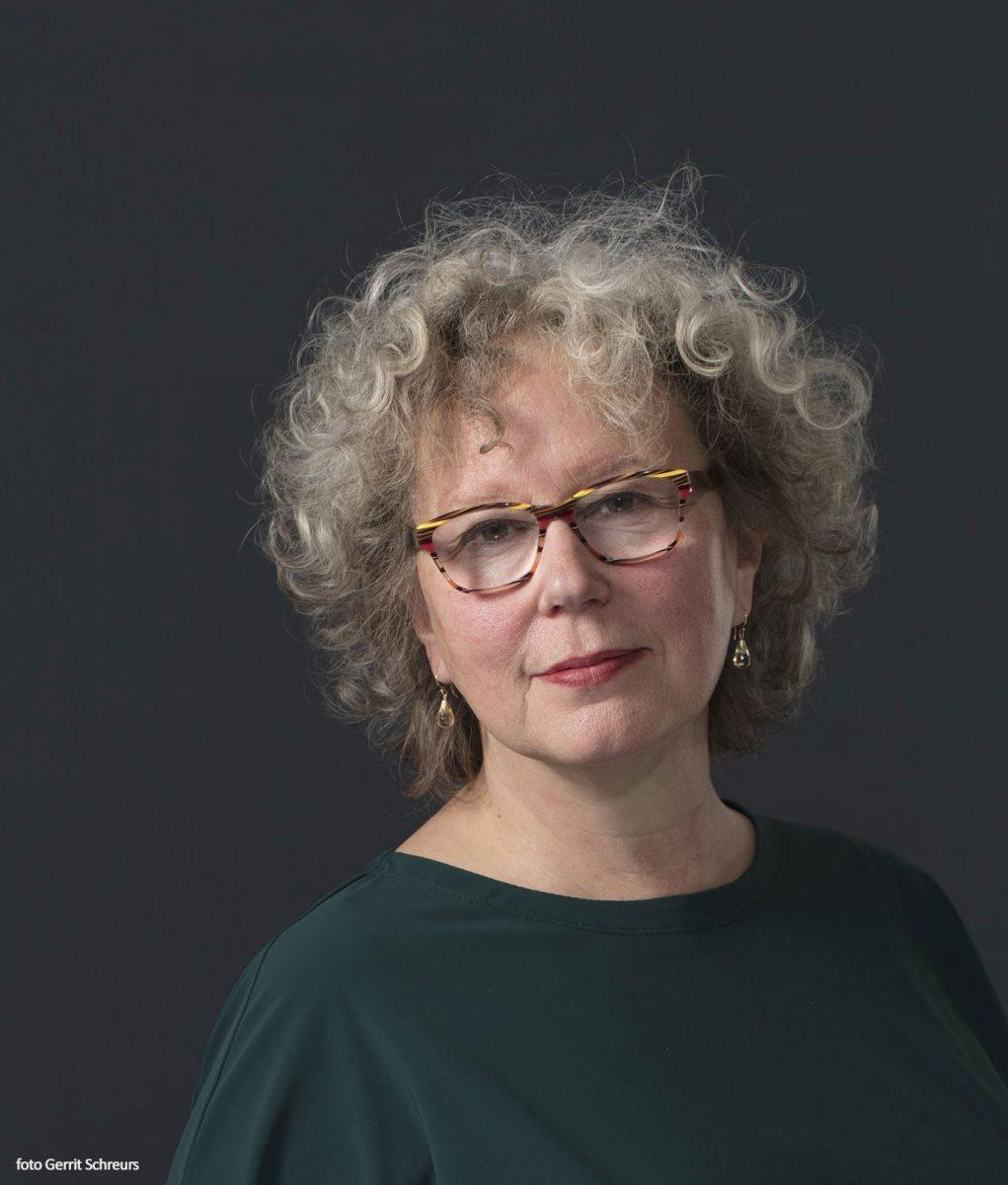
I have written in the past of the joys of being the curator of a museum dedicated to the work of M.C. Escher. I am presented with intriguing questions that would never have occurred to me, which set me thinking about his work. People offer us things and occasionally we have an unexpected opportunity to acquire a new work. This was the case recently, when we were able to buy a wonderful, previously unknown, composition on paper that Escher made in March 1924. The subject is a little town on a steep hillside. Escher created this surprisingly large work of art with India ink and pencil. Its authenticity is guaranteed by the fact that it was handed down to descendants of Escher’s brother as part of the family estate.
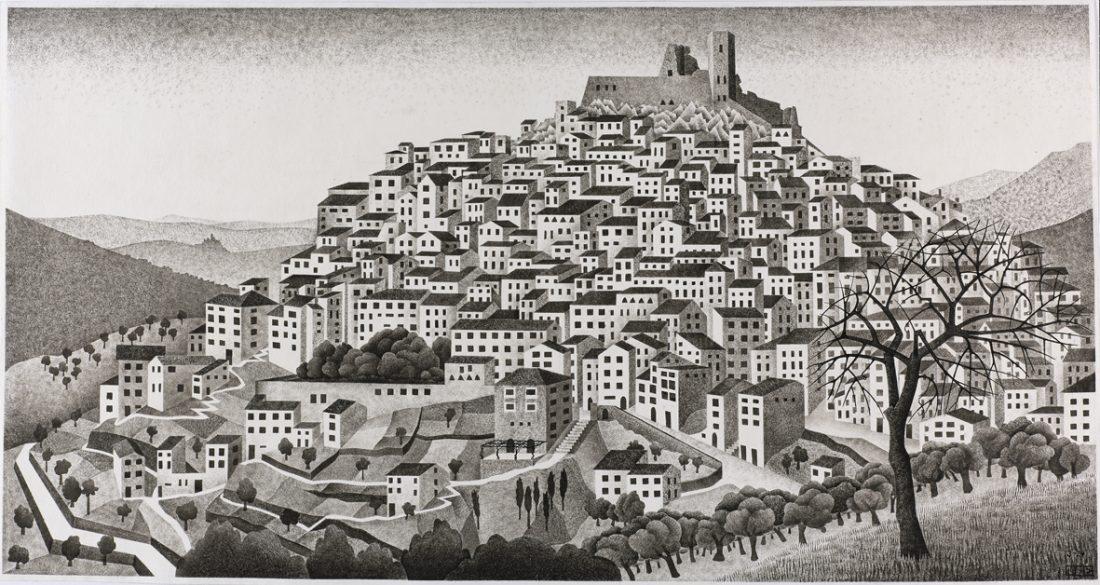
All these years later, no one knew which little hillside town served as the inspiration for this large composition. I assumed it must be a place in in Italy, because Escher frequently spent time in Italy from 1922 onwards. He and his wife Jetta even moved to Rome in 1925. If this was a preparatory study for a print, it would be relatively easy to identify it.
Before starting work on a print, Escher would do many sketches while trekking through the countryside. Sometimes he would also do more detailed preparatory studies in the studio. He would then make a woodcute or lithograph based on these studies. But there was no sign of this particular hillside in the prints Escher created in 1924 and 1925. And this is easy to verify, because in 1924 Escher did not produce a single print!
In 1923, Escher had fallen in love with Jetta Umiker, who was of Swiss and Italian descent. The two families met on several occasions to discuss the forthcoming marriage, which eventually took place in June 1924. The Umikers travelled from Italy, where Jetta and Mauk met, to Zürich. Mauk caught up with them together with his father, who travelled to Zürich to meet the family and discuss the monthly allowance to be paid by both sets of parents.
We know from Escher’s diary that he spent the first few months of 1924 in Rome. In his Italian landscapes Escher always depicts his perception of a panorama. In other words, he alters the scene to create a work of art, yet the actual scene always remains recognisable. Having been unable to locate the little town through the prints, I tried to find it in the Italian towns that Escher visited in 1922 and 1923. He travelled around both with friends and on his own, so there were quite a few. I wondered whether it might be Assisi, where there is also a ruin near the top. Or possibly Orvieto? But there was not enough of a resemblance between these towns and the panorama depicted in the composition. We put out a call on our Facebook page, but most replies suggested towns and villages that Escher had not yet visited at that point in his life. Eventually an online search coincidentally led us to the little town of Montecelio, 25 kilometres northeast of Rome. The similarity with Escher’s composition is striking:

The likeness of the ruins and shrubs that are still there near the top of the hill is clearly visible in this close-up.
Panoramas feature prominently in Escher’s early Italian work. Over a period of several years we see how Escher adopts increasingly extreme vantage points when depicting villages and towns. He is often looking up from the bottom of a deep valley, or looking down from far above, portraying scenes from a worm’s-eye view or a bird’s-eye view. Yet rather than attempting to create an exact copy of what he saw, according to his friend, the journalist Hein 's-Gravesande, Escher offers a synthesis. This is what we see here. Escher conveys the essence of the landscape. In his studio he transformed reality into a work of art by leaving things out and changing things. In this instance, Escher literally put his stamp on his surroundings. He shows us the world through his eyes, without altering the actual scene to such an extent that it becomes unrecognisable. There are several examples of this in the Eternity & Infinity permanent collection presentation at Escher in The Palace.
This large composition on paper is not a typical drawing. Escher created it with stencils, ink rollers and stencilling brushes. He also printed shapes with little stamps that he made with different kinds of paper. The image is made up of many tiny elements that Escher stencilled, printed or stamped on the paper with diluted and undiluted India ink. He finished finer details, such as the twigs in the tree and the terrace vegetation in the mid-foreground, with pen and ink.
The densely-packed town covers the hillside. On the lower slopes there are buildings with three or four stories and at the foot of the hill there are a number of isolated buildings. But this is not simply an impression of a landscape. It is a meticulously arranged composition: a synthesis. In Escher’s oeuvre there are two other works that show some parallels to this composition: the portrait of P.J. Zutphen of 1920 and a panorama of the little town of Corte in Corsica completed in 1928. The two works are also very different in terms of technique and rendition.
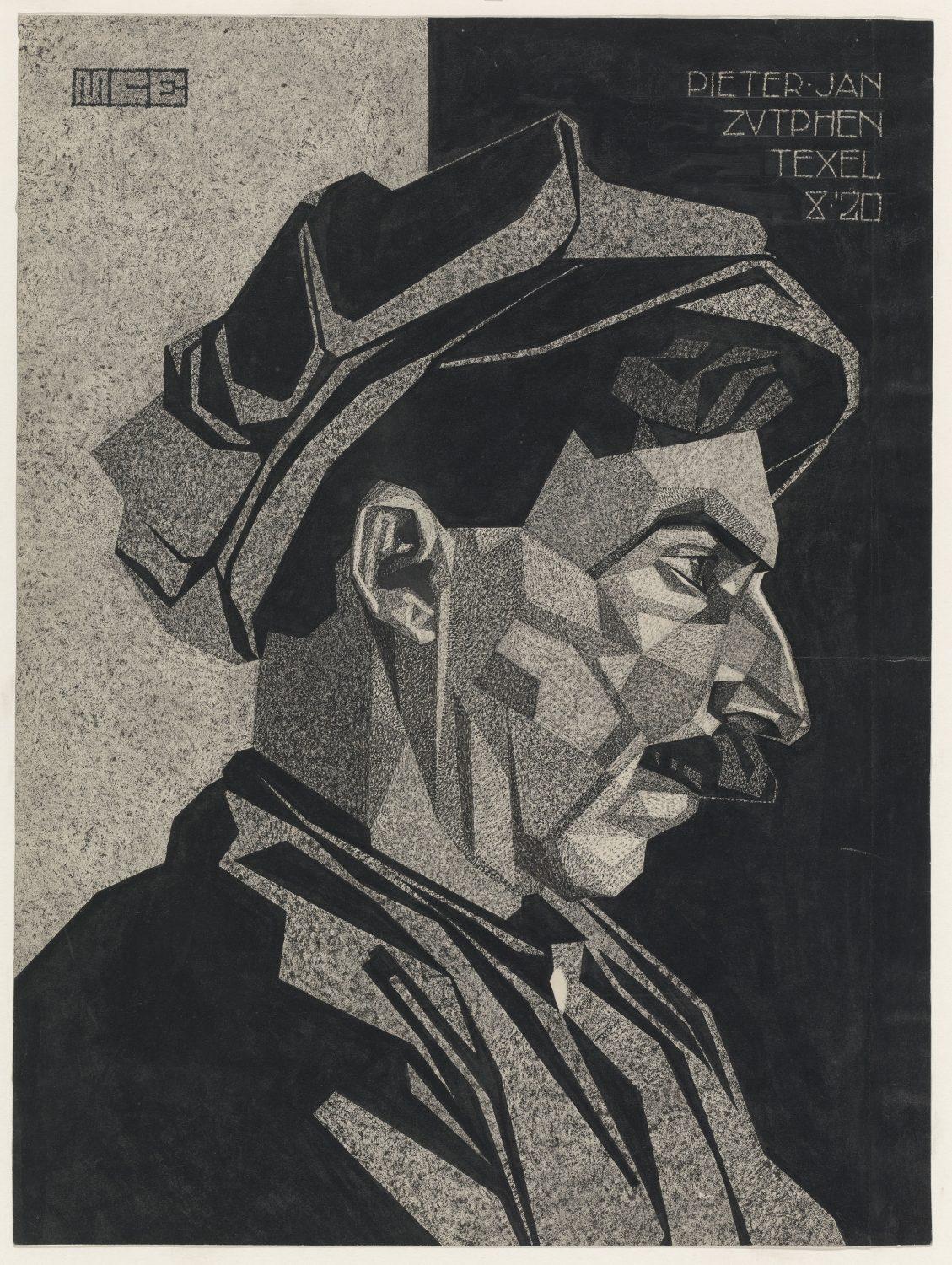
In the portrait, Escher experimented with the shapes of the farmer’s face, which is partially constructed of geometric planes, somewhat like cubist portraits. Here too he used diluted and undiluted India ink.
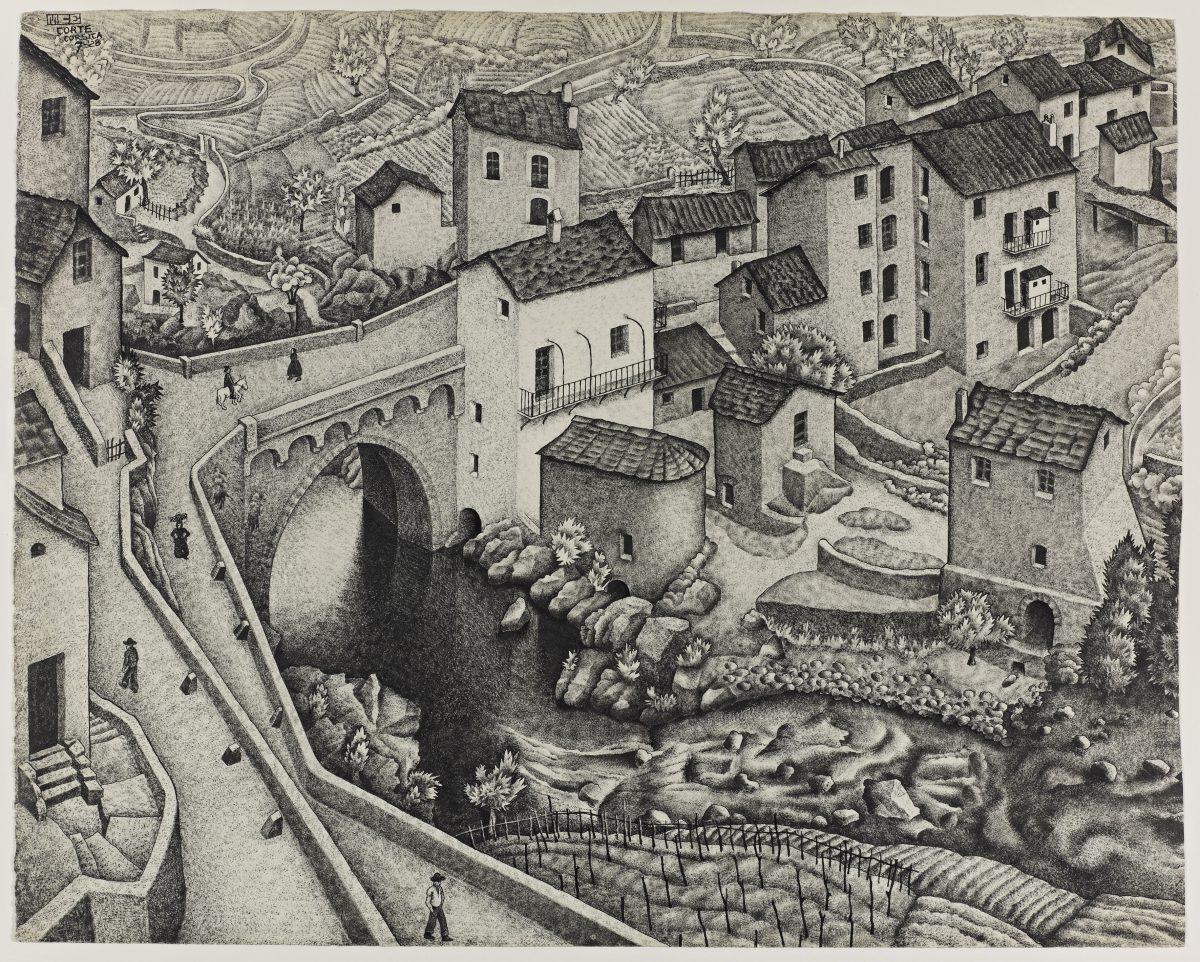
In Corte Corsica, Escher used stencilling brushes to create a dream-like image. Here, the often hard and distinct lines appear softer. The stylisation of the buildings is reminiscent of Escher’s earlier panorama of Montecelio. The inclusion of figures in motion, which is rare, gives the picture a more whimsical and narrative feel.
Throughout his life Escher returned to particular themes and interests. One of these was perspective, which he explored in depth in his early Italian landscapes. Montecelio is one of these early works, but it is not just about perspective. Here, we see Escher transform a maze of buildings on an Italian hillside into a coherent whole. He does this by repeating a series of windows in changing combinations, which gives the initially somewhat stiff-looking composition unexpected vitality. The red and blue lines of the altered detail below show sets of windows that are the same, as Escher uses and reuses a row of shapes.
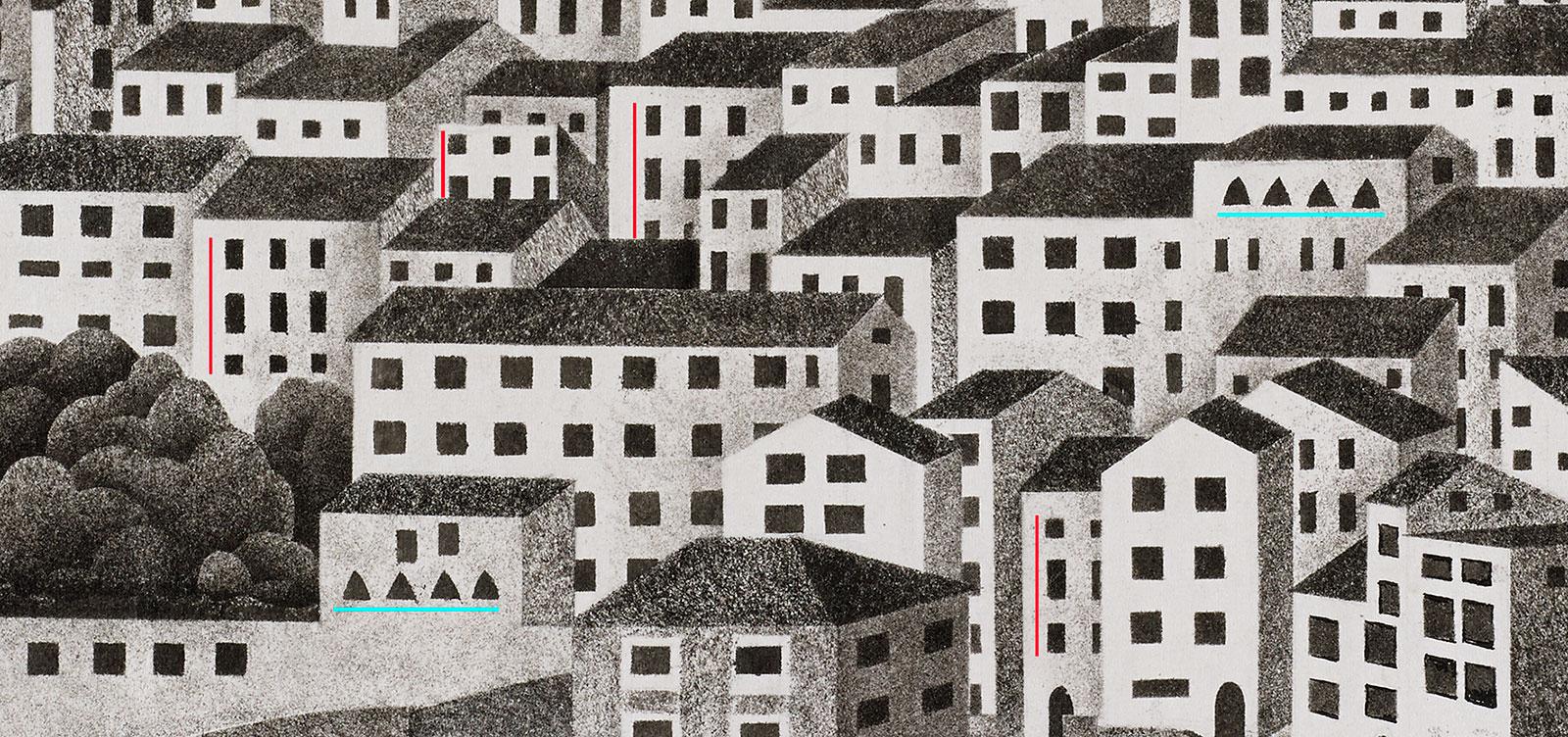
Escher accentuated the width of the scene with a repoussoir created by the tree, which frames the picture from the bottom right, and the soft layers of air at the top. Escher was familiar with both of these elements from the Japanese art he grew up with and his training as an artist in Haarlem. The meticulously arranged composition and the difference between the image and reality both rely the notion that this work is a sketch. This panorama is a distinct and unique work of art. It is an experiment by a young artist who is exploring one of his favourite subjects, the panorama, in an unusual way.
More stories about Escher

